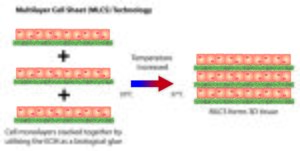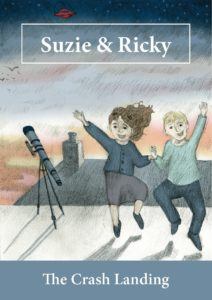Profile
Elizabeth Kapasa
THANK YOU FOR VOTING EVERYONE!!! #TeamLizzie!!!!
Curriculum Vitae
-
Education:
Queen’s Gate School. Wimbledon High School. University of Sheffield. University of York. University of Leeds.
-
Qualifications:
10 GCSEs, 4 AS Levels, and 3 A Levels. MEng in Biomaterials. MSc in Regenerative Medicine & Tissue Engineering.
-
Work History:
Life guard, dog walking, note taker for students with disabilities, student mentor, volunteer, and a laboratory teaching assistant.
-
Current Job:
Postgraduate Researcher
-
Employer:
University of Leeds
-
About Me
Postgraduate Researcher in Science & Engineering
-
My Work
I researched a new technology that layers sheets of cells like a cake, to help millions repair their damaged bones!
-
Read more
About Me:
Telling people about me and where I’m from is a complicated question… My Mum is Italian and my Dad is Chinese, but I was born in the USA and I lived in London since I was 4 years old. Growing up I always enjoyed making things and solving problems, whether it be a puzzle or how to build a castle out of lego. I was also that kid who always asked, “…but why?” and I’m still the same today. I love finding out how and why things work as well as wanting to help people. This combination lead me to study bioengineering to develop new technology to repair damaged or diseased tissues in the human body.
When you enjoy what you do, it can be difficult to separate your work-related interests from extra-curricular hobbies – which I think is a positive thing. So outside work I am involved with Christians in Science and Women in Engineering. I’m a STEM ambassador with STEMNET too. As I mentioned before, I love people too so I love spending time with friends and family, eating delicious food, going for a walk in The Peaks or travelling to a new place to explore. When I can, I love reading (ideally on the beach!), swimming and going for walks.
About My Work:
I decided to do a MSc to give myself the opportunity to study something I love and wanted to know more about (I was doing a PhD, but sadly had to change paths because I was diagnosed with a chronic illness). My MSc was in Tissue Engineering and Regenerative Medicine which is a field that involves a range of technologies that seek to help the body repair and restore itself. Millions of people suffer from damaged bone from an accident or disease. My research was looking into a new technology called cell sheet technology, which I’m developing to use to help repair and regenerate damaged bone. Cells are cultured to form sheets that can be detached and stacked together to make a 3D tissue (Figure 1 and 2), a bit like stacking layers of a cake together. Then this can be combined with a material called a scaffold, a bit like scaffolding on a building it helps to support the cells when you put it in the area of damaged bone. Ideally this scaffold will degrade in the body at the rate that new bone is formed, and the cell sheets should help speed up this process.
Figure 1: Advantages of cell sheet technology compared to normal cell culture methods. This includes avoiding damaging the cells and the extracellular matrix (ECM), which are key components that can be kept to provide an effective clinical treatment. The ECM is secreted by cells to provide structural and biochemical support to the surrounding cells, which is the main component of bone.
Figure 2: Stacking layers of cell sheets to make a multi-layered cell sheet that forms a 3D tissue.
-
My Typical Day: I typically spent my day in the lab doing experiments, solving problems, and analysing my results. Now, I spend my time reading and writing.
-
Read more
I didn’t have a very typical day. The great thing about being a researcher is that you can manage your own time, so my timetable was flexible. Although, it does mean that you have to motivate yourself to get work done and figure out how to fix problems on your own.
I worked in a lab which is in St. James Hospital, Leeds. I would do experiments most days, although the work is varied since my research involves different subjects (Biology, Chemistry, Physics, Maths and Engineering) so I didn’t get bored. A large part of my work involved culturing cells (Figure 3), then using microscopes to look at them and analyse them (Figure 4). I also use special tests and machines to analysing things further.
Sometimes I went into surgery to watch operations and collect cell samples that I later took to the lab to do experiments on (Figure 5 and 6 see the bottom of my profile). A few times a year I also got to go to conferences and do placements at other labs or in industry, which are sometimes abroad. By far my favourite placement, I spent 3 months in Japan, 2 months of it was working in a lab in Tokyo.
Figure 3: Picture of a cell culture hood which is a clean place where you can grow cells and move them between dishes.
Figure 4: A microscope image of cells tagged with fluorescent markers. Blue: cell nuclei; Green and Red: extracellular matrix (ECM). The ECM is secreted by cells to provide structural and biochemical support to the surrounding cells, which is the main component of bone.
-
What I'd do with the money
To publish and distribute a children’s book to inspire primary school children to become engineers!
-
Read more
Please #VoteLizzie and join #TeamLizzie to be a part of inspiring young people! Whenever you see the book you can join me in having the same pleasure of knowing that you were a part of making that possible!!
Summary
So far we, Women in Engineering, have written the book and we’re just about to publish it. Currently we only have enough money to give out free books to local schools in Sheffield. It would be amazing if we had more money to make this project national and maybe even available online as an e-book. It has great potential to be the first book in a series that could also be linked to websites and apps related to the book. Although all this needs funding!
Project Need
The UK is a world leader and is the eighth largest manufacturing country in the world. Engineering contributes to about 20% of the UK’s GDP and is worth an astonishing £1 trillion which is three times the size of the UK’s retail sector. Currently the UK only trains 12,000 engineers per year compared to India at 200,000 and China at 500,000. If we continue at this pace in the future we will be facing a STEM (Science, Technology, Engineering and Mathematics) skills shortage in our society that crucially contributes to the sustainment and development of our country. 800,000 STEM experts are needed by 2020 to meet demand and avert damaging consequences, therefore 1 in 5 must train to be an engineer. Furthermore the UK’s STEM disciplines are not drawing on the full potential of our society with only 8.7% of engineers being women; this is the lowest percentage of women engineers in Europe where Latvia has the highest in Europe at 30%.
Project Aim
The overall aim of the children’s book is to inspire primary school children to want to become engineers, rather than doctors, teachers, athletes etc. ‘Suzie and Ricky: The Crash Landing’ is about how the children find a friendly engineering team to help their newfound alien friend return home.
The first aim of the book would be to encourage an exciting and fun attitude towards STEM subjects through the activities the engineers do to build the rocket, and what school subjects they used to do this. For example, the materials engineer used science and engineering to select a suitable special material for the rocket; the electronic engineer used technology, science and engineering to build the control system etc.
Secondly, the book raises awareness about engineering by giving examples of how each engineer contributes to building the rocket, it highlights everyday objects that they design/build, and indicates what A-Levels are required. Alongside the children, the teachers would also be exposed to a general idea about what each engineer is capable of achieving. The book could be incorporated into some school work/homework. In addition, if this was incorporated into homework this would raise even greater awareness amongst parents. Parents are the most important when a child is considering GCSE choices, College courses and University degrees.
Project Future
The book will be launched together with fun rocket-related activities on Women in Engineering Day (29/06/15) at ‘Engineering Imagination’. I successfully obtained funding to hire an illustrator and publish 500 books that will be offered to every primary school in Sheffield (free!), which will hopefully be combined with entertaining workshops about engineering from September 2015 onwards. Later this year I will be looking to acquire additional funding (like from winning this competition!) to expand this project nationally and make it available online in the form of e-books. It also has great potential to be the first book of a series, that could be linked to websites and apps related to the book(s).
Front of the book:
Back of the book:
For more information on Women in Engineering visit: www.WomenInEngineering.org.uk
-
My Interview
-
How would you describe yourself in 3 words?
Creative, competitive and caring.
What's the best thing you've done in your career?
I’ve held a human brain which was pretty cool! But I’m still young, so I’d like to think the best is still yet to come! But so far it would have to be getting involved in activities like this to inspire young people to study STEM (Science, Technology, Engineering, Maths) subjects. At the moment I’m leading a project to publish a children’s book to inspire primary school children to become engineers which has been really fun!
What was your favourite subject at school?
Design & Technology
What did you want to be after you left school?
An Engineer!
Were you ever in trouble at school?
Of course! Who doesn’t get in trouble at some point?
If you weren't doing this job, what would you choose instead?
That’s hard to imagine…but probably a doctor or an interior designer. I like to think I design things for the human body so I have combined both!
Who is your favourite singer or band?
I’m indecisive…but at the moment its Ed Sheeran.
What's your favourite food?
I LOVE food…its a tough choice between Italian, Chinese and Japanese food.
What is the most fun thing you've done?
Travelling the world – I lived in Japan for 3 months last summer which was amazing! I also went zip-lining across the Canadian Rockies in Whistler which was terrifyingly fun!
Tell us a joke.
Why did the mushroom go to the party? …Because he was a fun-ghi!
-






